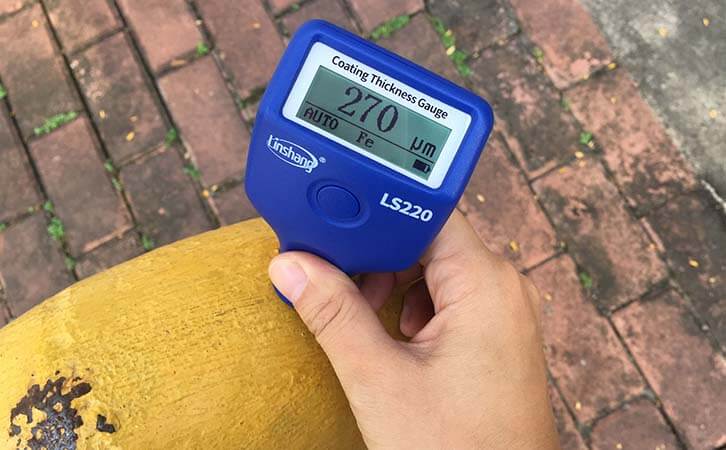How Much Do You Really Know About Powder Coating?
With the strict requirements of national environmental protection policies and people's pursuit of health and environmental protection, liquid coatings containing organic volatile agents have gradually been replaced by environmental protection coatings.
1. Advantages of powder coating
The advantages of powder coating are that it can get a thick coating film (50 ~ 150μm) in one coating, high production efficiency. It can save resources, reduce VOC emissions and meet the requirements of modern environmental protection concepts. Therefore, powder coatings have developed significantly. However, the coating film of the color steel plate does not need to be too thick. In order to reduce the coating cost and the pass rate of a single spray coating, the thin coating powder coating has a special application field. A thin and uniform coating film is a very important property of the thin coating powder coating.
2. Film thickness of powder coating
The film thickness of conventional powder coatings is 60 ~ 80μm. You can use Linshang powder coating thickness gauge to detect the specific thickness of the coating film. Only the film thickness is reached. In order to ensure that the coated workpiece is completely covered, the flatness of the coating film and various performance indicators meet the requirements. If the film thickness of conventional powder coatings is reduced to 45 ~ 60 μm, it is very difficult to achieve the above performance and ensure the uniformity of powder coating at one time and corners. Therefore, improving the particle size distribution, hiding power, leveling property and charging efficiency of conventional powder coatings is a problem that must be solved in the development of thin coating powder coatings.
At present, foreign coil coating companies have the technology to inject a large amount of powder into the powder coating room. Static electricity is loaded into the static electricity generating area to realize coating a large amount of powder on the substrate. This method can realize industrial production. However, it is difficult to control the film thickness in the production process and it is difficult to obtain a thin coating of 30-40 μm.
3. Powder coating thickness detection
All powder coatings must regularly measure the coating thickness. Regular measurement of coating thickness helps control material costs, increase efficiency and maintain the quality of the finish. Powder coating manufacturers usually recommend using a powder coating thickness gauge to control the coating thickness within a reasonable range. The qualified coating thickness can help the product achieve the best performance and this is also what customers want.
Powder coatings perform their intended function within the thickness range specified by the manufacturer. Many physical and appearance characteristics of the finished coating are directly affected by the dry film thickness (DFT). Dry film thickness will affect the color, gloss, surface profile, adhesion, flexibility, impact resistance and hardness of the coating. When the film thickness is not within the tolerance range, the fit of the parts assembled after coating will also be affected.
There are other benefits to measuring coating thickness accurately. Regardless of meeting the requirements of the International Organization for Standardization (ISO), customers' requirements for process control or quality, companies need to control the quality of their coatings to avoid costly rework.
When powder coating is based on metal such as steel, a powder coating thickness gaugebased on the principle of magnetic induction can be used. During the measurement, a magnetic field is generated by the electromagnetic coil. The magnetic field changes as it approaches the magnetic substrate. The change of the magnetic field depends on the distance from the metal substrate to the detector, that is, the thickness of the coating. The magnetic powder coating thickness gauge usually does not require any calibration adjustments. For example, Linshang LS221 powder coating thickness gauge requires zero adjustment without calibration. When customers need to measure non-conductive coatings such as coatings, anodized layers or ceramics on non-magnetic metal substrates such as copper, aluminum, die-cast zinc, brass, etc., They can choose a powder coating thickness gauge based on the eddy current principle.
- High precision coating thickness gauge for used car
- Automotive paint protection films coating thickness gauge
- Plating Thickness Measuring Instrument for Detecting Anti-corrosion Coating
- Linshang LS220, LS191, LS160A– Necessary for Car Cover Inspection
- Coating Thickness Gauge for Second Hand Vehicle
- Zero Adjustment Step of Coating Thickness Gauge
